Vaser-Liposuction in Spain
Search and Compare the Best Clinics and Doctors at the Lowest Prices for Vaser-Liposuction in Spain
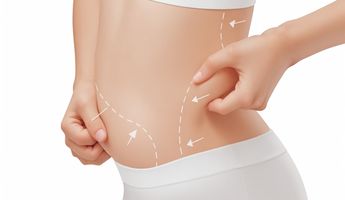
Find the best clinics for Vaser-Liposuction in Spain
No clinics available

From 30 verified reviews
Mariajose, 23 September 2020
Mi experiencia está siendo muy buena muy buen trato y muy profesionales volvere sin duda
- Home
- Spain
Compare Before & After Photos of _procedure_photos.phpVaser-Liposuction


Front view


Half-side view
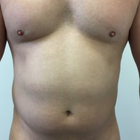

Front view
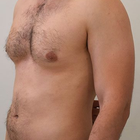
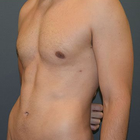
Half-side view
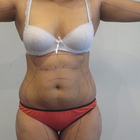

Front view
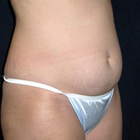
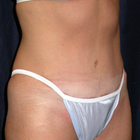
Half-side view
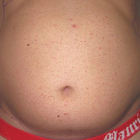

Front view
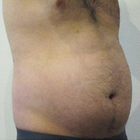
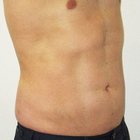
Half-side view
WHY US?
At Medijump, we're making medical easy. You can search, compare, discuss, and book your medical all in one place. We open the door to the best medical providers worldwide, saving you time and energy along the way, and it's all for FREE, no hidden fees, and no price markups guaranteed. So what are you waiting for?

Free

Best Price

Widest Selection

Risk-Free
What you need to know about Vaser-Liposuction in Spain

Vaser liposuction, also referred to as Vaser Lipo for short, is a type of cosmetic treatment performed to change the contours and shape of the body by eliminating stubborn fat deposits. Vaser stands for Vibration Amplification of Sound Energy Resonance, which is a specialized ultrasound technology that sends out ultrasonic frequency waves to break down fat cells from desired areas of the patient. Once the fat cells have been broken down, the surgeon can perform the liposuction part of the procedure, which is removing excess fat through a suction process.
Vaser Liposuction has become increasingly popular because the specialized ultrasound technology increases the accuracy of the procedure and minimizes damage to the surrounding tissue, which results in less bruising and pain compared to traditional liposuction. Also, since the fat cells are specifically targeted, the result is much more sculpted and smoother than traditional liposuction. Vaser Liposuction can be performed in many areas of the body, including the abdomen, back, arms, flanks, neck, thighs, calves, ankles, hips, buttocks, and under the chin.
Like other liposuction techniques, it is important to note that Vaser Liposuction is not a weight loss solution. The procedure is intended to contour the body, reduce stubborn excess fat, and reveal muscle tone underneath the fat. You must already be healthy and within your target weight before you consider undergoing this procedure. It
What does a Vaser-Liposuction Procedure Involve?
To begin the procedure, your surgeon injects a saline-anesthetic solution mixture or tumescent solution directly into treatment areas. This solution is used to expand the fat compartment and tightens small blood vessels. It also helps to start the breakdown of the fat cells and protects other tissues. Tiny incisions are then created in the targeted area to insert the Vaser ultrasonic probes. The vibration from the ultrasound will break down the fat. Once the fat is broken down, your surgeon will use a small cannula to remove the fat cells and liquid. Because the fat is broken down with the ultrasound, the fat extraction with the liposuction cannula is easier and less traumatic than in traditional liposuction.
Vaser Liposuction can be carried out under local anesthetic with minimal oral sedation, general anesthetic, or intravenous sedation. If the procedure is performed under local anesthesia, you may feel slight pinching and pressure when the liposuction part is performed.
How Long Should I Stay in Spain for a Vaser-Liposuction Procedure?
Vaser Liposuction takes around 2 to 5 hours to complete. After the procedure, you may have to stay in the hospital overnight if general anesthesia is used. However, if local anesthesia is used you should be able to leave the hospital on the same day once the effects of the anesthetic wear off.
Since your surgeon will schedule follow-up appointments to monitor your healing and remove your stitches, you may need to stay in Spain for several days following the surgery. The recommended length of stay in the country is about three to seven days.
What's the Recovery Time for Vaser-Liposuction Procedures in Spain?
The recovery period of Vaser Liposuction is typically short, but it depends on your general health and treated area. In general, you should be able to return to work and most of your daily activities within two to seven days. You also need to refrain from exercise or other forms of strenuous activities for about 2 weeks. However, if you have gone through a more extensive procedure, you need to prepare for a longer recovery period. The overall recovery time may take up to 24 days following the Vaser Liposuction.
What sort of Aftercare is Required for Vaser-Liposuction Procedures in Spain?
Your surgeon will give you specific post-operative instruction. You must follow all the instructions closely to help you heal quickly and smoothly, as well as to avoid any possible complications. It is important that you rest as much as possible during the first few days. You may feel some pain and discomfort, but your surgeon will prescribe pain medication to help manage the discomfort.
It is important that you maintain a healthy lifestyle by following a healthy diet and exercising regularly to keep the results of your Vaser Liposuction. While mild weight fluctuations will go unnoticed, significant weight gain will become noticeable. Therefore, have a well-balanced diet, avoid too many sweets, and stay away from fast food.
What's the Success Rate of Vaser-Liposuction Procedures in Spain?
Approximately 90% of women and men who have gone through Vaser Liposuction reported having achieved their target. The results of the procedure may be seen immediately, but the most significant improvement will appear in 6 to 8 weeks following the procedure. It may take about 6 months to achieve the final results.
Again, your new look will only remain if you take care of yourself. The results will not be permanent if you do not stick to an active and healthy lifestyle. The procedure is designed to give you a little boost and to get rid of persistent fat that you cannot remove easily through a healthy diet and exercise.
While risks and side effects of Vaser Liposuction rarely occur, it is best that you are aware of them. The risks and side effects are:
- The ultrasound device may burn your skin and tissues.
- Skin discolorations.
- Skin from the affected area may be wavy, dimpled, or saggy.
- The formation of scar tissue.
- Swelling.
- The remaining fat cells can expand.
- To further minimize the risks, make sure you choose a skilled and experienced surgeon.
Are there Alternatives to Vaser-Liposuction Procedures in Spain?
If you do not want to undergo Vaser Liposuction or you are not an ideal candidate for the procedure, you can opt for the nonsurgical alternatives:
- CoolSculpting works by freezing stubborn fat cells in certain areas of the body. The freezing temperature can destroy fat cells permanently. This type of procedure can remove fat cells from certain areas of the body, particularly belly fat, back fat, love handles, arm fat, or a double chin.
- Sculpsure uses a laser beam to heat fat cells until they become irreversibly damaged. This procedure is very quick and requires almost no downtime.
Whilst the information presented here has been accurately sourced and verified by a medical professional for its accuracy, it is still advised to consult with your doctor before pursuing a medical treatment at one of the listed medical providers
No Time?
Tell us what you're looking for and we'll reachout to the top clinics all at once
Enquire Now

Popular Procedures in Spain
Prices Start From $111

Prices Start From $120

Prices Start From $931

Prices Start From $76

Recommended Medical Centers in Spain for procedures similar to Vaser-Liposuction

- Interpreter services
- Translation service
- Religious facilities
- Medical records transfer
- Medical travel insurance
- Health insurance coordination
- TV in the room
- Safe in the room
- Phone in the room
- Private rooms for patients available

- Interpreter services
- Translation service
- Religious facilities
- Medical records transfer
- Medical travel insurance
- Health insurance coordination
- TV in the room
- Safe in the room
- Phone in the room
- Private rooms for patients available

- Interpreter services
- Translation service
- Religious facilities
- Medical records transfer
- Medical travel insurance
- Health insurance coordination
- TV in the room
- Safe in the room
- Phone in the room
- Private rooms for patients available

- Interpreter services
- Translation service
- Religious facilities
- Medical records transfer
- Medical travel insurance
- Health insurance coordination
- TV in the room
- Safe in the room
- Phone in the room
- Private rooms for patients available

- Interpreter services
- Translation service
- Religious facilities
- Medical records transfer
- Medical travel insurance
- Health insurance coordination
- TV in the room
- Safe in the room
- Phone in the room
- Private rooms for patients available

- Interpreter services
- Translation service
- Religious facilities
- Medical records transfer
- Medical travel insurance
- Health insurance coordination
- TV in the room
- Safe in the room
- Phone in the room
- Private rooms for patients available

- Interpreter services
- Translation service
- Religious facilities
- Medical records transfer
- Medical travel insurance
- Health insurance coordination
- TV in the room
- Safe in the room
- Phone in the room
- Private rooms for patients available

- Interpreter services
- Translation service
- Religious facilities
- Medical records transfer
- Medical travel insurance
- Health insurance coordination
- TV in the room
- Safe in the room
- Phone in the room
- Private rooms for patients available

- Interpreter services
- Translation service
- Religious facilities
- Medical records transfer
- Medical travel insurance
- Health insurance coordination
- TV in the room
- Safe in the room
- Phone in the room
- Private rooms for patients available

- Interpreter services
- Translation service
- Religious facilities
- Medical records transfer
- Medical travel insurance
- Health insurance coordination
- TV in the room
- Safe in the room
- Phone in the room
- Private rooms for patients available
Vaser-Liposuction in and around Spain
About Spain
Historic Spain is home to the third-highest number of UNESCO World Heritage Sites, after Italy and China. Part of the Iberian Peninsula, along with Portugal, Spain also shares borders with France and the less well-known, Andorra. The country itself is made up of several regions, both on the mainland and out at sea, with the Canary Islands closer to Morocco than Spain - they are located in the Atlantic Ocean, whilst the Balearic Islands are a little closer to home, in the Mediterranean Sea. On the mainland there is Central Spain, home to the capital, Madrid, Catalonia in the East, home to the second city, Barcelona, and the Basque Country in the North, to name but a few.
Spain sees an estimated 100,000 medical tourists each year, many of which travel for Vaser-Liposuction procedures. The biggest target market is from the UK, accounting for one in four of Spain's 60m annual tourists. An excellent healthcare system combined with warm temperatures and competitive prices means that Spain is now one of the more popular destinations in Europe for medical tourism. The most popular procedures tend to be cosmetic surgery, fertility treatments, bariatric surgery, cardiac surgery, orthopedics, urology, and bone marrow transplants.
Popular Parts of Spain
Spain has diverse landscapes, dynamic cities, influential art, and delightful food.
- Madrid is the capital of Spain. Modern infrastructure and historic neighborhoods blend nicely in the city. Known for its glorious fashion, food, and nightlife, the city has a lively spirit. Rest in El Retiro Park under the sun or take a guided tour in Palacio Real. Tourists who love sports can watch a Real Madrid soccer match.
- Barcelona has a plethora of attractive architecture, unique food beautiful beaches, and a vibrant nightlife. It is the most popular tourist destinations in the country. Visit Picasso Museum, Enjoy Gaudi’s Architecture the church of the Sagrada Família, or visit the Barcelona History Museum and enjoy the beach.
- Valencia is Spain’s third-largest city. The city is filled with an array of art nouveau buildings as well as Gothic and Renaissance monuments. Try all the food that the city offers, especially the famous paella. Be inspired by the stunning Cuidad de las Artes y las Ciencias, a massive building in the old Turia riverbed.
- Palma de Mallorca is a very welcoming city for international tourists. It has a number of historical attractions, Gothic churches, and the beautiful Mediterranean Sea at its feet. Shopping and gastronomic scenes are two of the best things in the city. Tourists can relax in the seafront cafés after a long day.
- Seville is a stunning artistic, cultural, and financial capital of southern Spain. Being a big university town, it has a very youthful vibe everywhere. Spend a day exploring Parque de Maria Luisa, tour Casa de Pilatos, get lost in the maze of Jewish Quarter’s small streets, and discover what the town has to offer on a bike.
- Ibiza is known to have some of the best nightclubs in the world. It is a beautiful island with dozens of amazing things to discover.
Weather and Climate in Spain
Spain has wonderful weather all year-round. Summer starts from June to August and tends to be nice. Tourists can expect warm and sunny weather. The temperature can get as high as 30 °C, sometimes even higher. Summer is the peak season for tourism so prices can increase by up to 50%.
Spring (April to May) and Autumn (September to October) are great times to visit. The weather is mild and perfect to do outdoor activities, although sometimes it can be unpredictable. The country is not as crowded as during summertime.
Winter in Spain is cold but the temperature does not drop too low. The average temperature is between 4 °C to 10 °C. Northern Spain and the mountainous areas sometimes experience snowfall and rain showers.
Getting Around in Spain
The main international airport in Spain is Adolfo Suárez Madrid-Barajas and Barcelona El Prat Airport. Madrid-Barajas is the largest airport in the country. It operates domestic and international flights. The airport connects Madrid with almost every country in the world. It serves several budget airlines such as Iberia Express, Ryanair, and EasyJet. It is the hub for Air Europa and Iberia.
Barcelona El Prat Airport also serves domestic and international connections with almost every country globally. Budget airlines such as Ryanair and WestJet operate flights from this airport. It is the hub for Level and Vueling.
To get to the city center, both airports provide taxis, buses, and metro. Taxis are the most convenient transportation mode but usually more expensive. Tourists who travel to Madrid are advised to buy the Madrid Tourist Travel Pass which can be used on any Metro, bus, or suburban train for just 5 EUR.
Spain has a well-designed public transportation network. Tourists can get around Spain by train. There are high-speed (AVE) and regular service trains (Talgo) for long-distance or medium distance travel, the fares are based on a 1st and 2nd class system. For short destinations, tourists can use local trains. It offers one class of seats and makes a lot of stops. 60-year-old and older travelers can get a discount between 25 to 40 percent for train tickets. Children under the age of 13 also qualified for discounts. Buses are another excellent option. Intercity buses are affordable, clean, and safe.
Renting a car gives more flexibility for tourists. International car rental agencies are widely available in the country. The highway system is easy for foreigners to follow. Parking can be quite hard in some cities and historic towns because it can get really crowded.
Taxis have a reasonable price. Spanish taxi drivers are usually trustworthy and don’t cheat. The taxi can be hailed on the street or from a taxi stand (parade de taxi). Available taxis have green lights or signs that say “libre” on them. Taxis run on meters, but if you’re traveling a long distance, you will have to agree on the fare in advance.
Tourist Visas in Spain
Citizens of the European Union, Norway, Liechtenstein, Iceland, and Switzerland can travel to Spain with their identity cards only. Citizens of Australia, Canada, Israel, Japan, the United States, and New Zealand are granted visa-free entry and can stay for up to 90 days. Other countries can check with their nearest Spanish embassy or consulate. Spain is a member of the Schengen Convention. If you hold a Schengen visa, you cannot extend it.
Additional Information
- Local Currency: the official currency is the euro (EUR). 1 USD converts to 0.85 EUR.
- Money & Payments: ATMs are available. Tourists can withdraw money from ATMs that display the relevant symbols such as Visa and MasterCard with a charge of 1.5% to 2%. Credit and debit cards can be used for most purchases, tourists will often be asked to show a passport. Tipping is optional, tourists can leave small change or up to 5% tip in restaurants.
- Local Language: the official language is Spanish. People in major tourist cities speak good English; it is also widely spoken in coastal resorts.
- Local Culture and Religion: The largest religion in the country is Catholic Christianity with 67.5% of the population follows the religion. There are small groups of Muslims, Jews, Buddhists, Hindus, Pagans, Taoists, and Bahá'ís.
- Public Holidays: Spain celebrates Christian holidays. Known as the country of fiestas and festivals, numerous festivals such as The Holy Week, La Tomatina, and The Fallas of Valencia are hosted annually.
Popular Searches
- Plastic Surgery in Thailand
- Dental Implants in Thailand
- Hair Transplant in Thailand
- Breast Augmentation Thailand
- Gastric Sleeve in Thailand
- Gender Reassignment Surgery in Thailand
- Laser Hair Removal in Bangkok
- Botox in Bangkok
- Dermatology in Bangkok
- Breast Augmentation in Bangkok
- Coolsculpting in Bangkok
- Veneers in Turkey
- Hair Transplant in Turkey
- Rhinoplasty in Turkey
- Stem Cell Therapy in Mexico
- Rhinoplasty in Mexico
- Liposuction in Mexico
- Coolsculpting in Tijuana
- Rhinoplasty in Korea
- Scar Removal in Korea
- Gastric Sleeve in Turkey
- Bone Marrow Transplant in India
- Invisalign in Malaysia
- Plastic Surgery in the Dominican Republic
- Tummy Tuck in the Dominican Republic
- Plastic and Cosmetic Surgery in Poland
- Rhinoplasty in Poland
- Hair Implant in Poland
- Dental Implants in Poland
- IVF in Turkey
